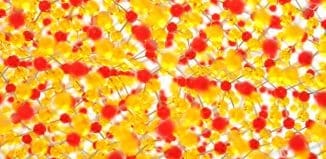Help! GPS malfunction!
This post is also available in:  עברית (Hebrew)
עברית (Hebrew)
 If you are one of those drivers who require their GPS for navigating it can be excruciatingly annoying if the navigation device malfunctions for a couple of minutes. But that’s all it is, annoying. You go off your course for a while and have to recalculate your route.
If you are one of those drivers who require their GPS for navigating it can be excruciatingly annoying if the navigation device malfunctions for a couple of minutes. But that’s all it is, annoying. You go off your course for a while and have to recalculate your route.
Loss of contact with GPS signals in a military context can be crucial to the success or failure of a mission. It can make you miss your target completely.
Because of its importance armies and security bodies are now equipping themselves with systems the purpose of which is to overcome such malfunctions. Israeli bodies requiring such products, run into many difficulties due to the restrictions set by foreign producers as well as their governments. Many European and Scandinavian states forbid the sale of such systems, or even the sale of user rights for these systems.
A different kind of systems which fill a necessary technological gap, are the inertial systems based on a gyroscope and a speed gauge. The function of the gyroscope is to point a direction, whereas the speed gauge marks the distance. The inertial systems back the GPS systems when these fail. They serve mostly for UAVs (unmanned aerial vehicles), robots and guided missiles, and include three speed gauges, three gyroscopes and three magnetometers (magnetic field gauges).
“It works on sensors,” explains Sassoon Noema, general manager of Arazim, “and sensors erode and become less and less accurate. The algorithm we developed manages to compensate for this, and our challenge is to minimize the mistake as much as possible.”
Arazim was set up in 1989 and since then has been working with the communication, the security and internal security industries. According to Noema, the user needs to balance between the cost of the gauges and his own ability to withstand seconds-long intervals in the GPS connection. Since losing contact with the GPS signals, even for a couple of seconds, means a mistake of several dozens of meters off target, the challenge is to minimize the mistake as much as possible.
Another type of navigational systems, systems that “find” the north, are based on one of three technologies. The first is of the well known and much liked compass, familiar to us from out walking trips or perhaps from the smartphone. The second is based on a gyrocompass (a non-magnetic compass based on a fast-spinning disc), which is a very accurate and expensive system. These systems are not influenced by magnetic materials in their vicinity, and can function accurately.
The solution offered by Arazim is based on GPS signals sent via satellite. “Two antennae, about half a meter apart, receive the GPS,” explains Noema. “The signals take longer to reach the more distant antennae, and we can calculate the difference and identify the azimuth facing the satellite. The navigation algorithm, referred to as the Kalman filter, produced a statistical estimate which, when used with particular mathematical procedure minimized the mistake in the distance.





























